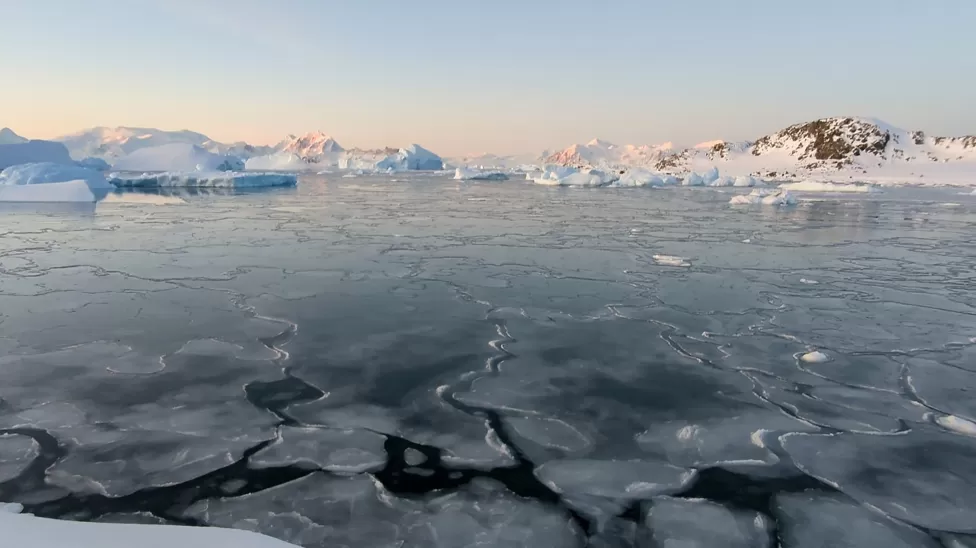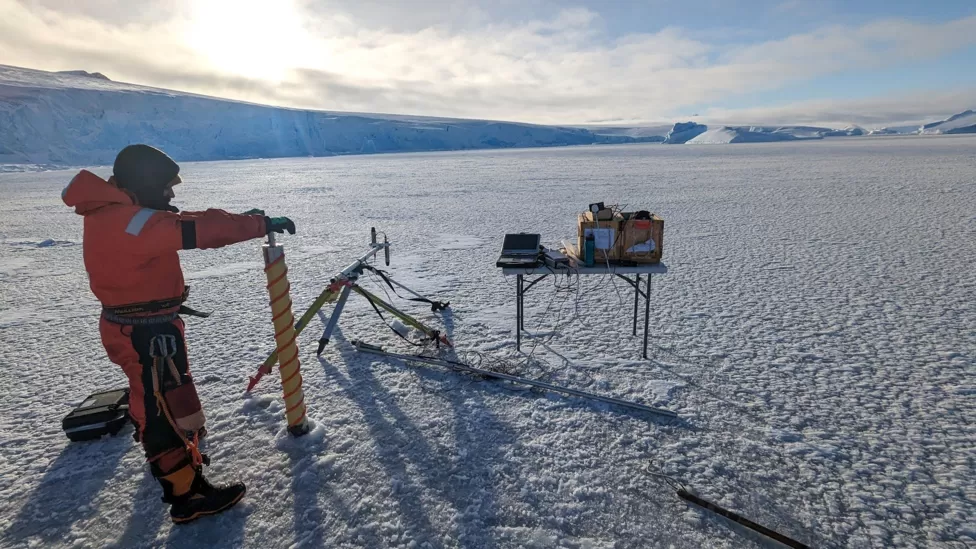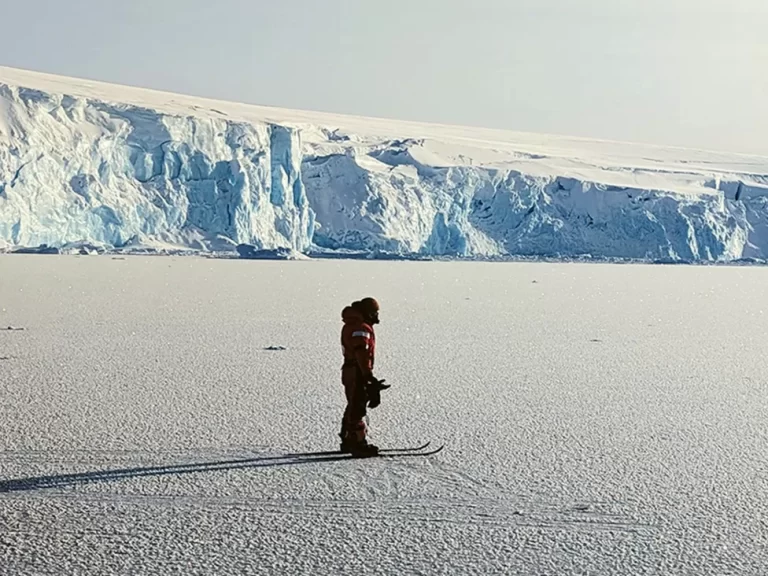The sea-ice surrounding Antarctica is well below any previous recorded winter level, satellite data shows, a worrying new benchmark for a region that once seemed resistant to global warming.
“It's so far outside anything we've seen, it's almost mind-blowing,” says Walter Meier, who monitors sea-ice with the National Snow and Ice Data Center.
An unstable Antarctica could have far-reaching consequences, polar experts warn. Antarctica's huge ice expanse regulates the planet's temperature, as the white surface reflects the Sun's energy back into the atmosphere and also cools the water beneath and near it.
Without its ice cooling the planet, Antarctica could transform from Earth's refrigerator to a radiator, experts say. The ice that floats on the Antarctic Ocean's surface now measures less than 17 million sq km – that is 1.5 million sq km of sea-ice less than the September average, and well below previous winter record lows.
That's an area of missing ice about five times the size of the British Isles.
Dr Meier is not optimistic that the sea-ice will recover to a significant degree. Scientists are still trying to identify all the factors that led to this year's low sea-ice – but studying trends in Antarctica has historically been challenging.
In a year when several global heat and ocean temperature records have broken, some scientists insist the low sea-ice is the measure to pay attention to.
“We can see how much more vulnerable it is,” says Dr Robbie Mallet, of the University of Manitoba, who is based on the Antarctic peninsula. Already braving isolation, extreme cold and powerful winds, this year's thin sea-ice has made his team's work even more difficult. “There is a risk that it breaks off and drifts out to sea with us on it,” Dr Mallet says.

Sea-ice forms in the continent's winter (March to October) before largely melting in summer, and is part of an interconnected system that also consists of icebergs, land ice and huge ice shelves – floating extensions of land ice jutting out from the coast.
Sea-ice acts as a protective sleeve for the ice covering the land and prevents the ocean from heating up. Dr Caroline Holmes at the British Antarctic Survey explains that the impacts of shrinking sea-ice may become evident as the season transitions to summer – when there's potential for an unstoppable feedback loop of ice melting.
As more sea-ice disappears, it exposes dark areas of ocean, which absorb sunlight instead of reflecting it, meaning that the heat energy is added into the water, which in turn melts more ice. Scientists call this the ice-albedo effect.
That could add a lot more heat to the planet, disrupting Antarctica's usual role as a regulator of global temperatures.
“Are we awakening this giant of Antarctica?” asks Prof Martin Siegert, a glaciologist at the University of Exeter. It would be “an absolute disaster for the world,” he says. There are signs that what is already happening to Antarctica's ice sheets is in the worst-case scenario range of what was predicted, says Prof Anna Hogg, an Earth scientist at the University of Leeds.
Since the 1990s, the loss of land ice from Antarctica has contributed 7.2mm to sea-level rise. Even modest increases in sea levels can result in dangerously high storm surges that could wipe out coastal communities. If significant amounts of land ice were to start melting, the impacts would be catastrophic for millions of people around the world.
‘We never thought extreme weather events could happen there'
As a self-contained continent surrounded by water, Antarctica has its own weather and climate system. Until 2016 Antarctica's winter sea-ice had actually been growing in size. But in March 2022 an extreme heatwave hit East Antarctica, pushing temperatures to -10C when they should have been closer to -50C.
“When I started studying the Antarctic 30 years ago, we never thought extreme weather events could happen there,” says Prof Siegert. Sea-ice has broken record minimums in summer for three of the past seven years, including February 2023.
Some scientists even believe these low ice records may indicate a fundamental change is happening to the continent – a shift in the conditions which have kept the region insulated. Antarctica's remoteness and shortage of historical information means a lot is still unknown.
The region is still the “Wild West” in scientific terms, according to Dr Robbie Mallet. Scientists know how far the sea-ice spreads, but not, for instance, how thick it is. Unlocking that puzzle could radically change climate models for the region.
At the scientific base Rothera, Dr Mallet is using radar instruments to study sea-ice thickness for an international research project called Defiant. He and other scientists are still trying to disentangle the causes of the vanishing winter ice.

“There is a chance that it's a really freak expression of natural variability,” he says, meaning that lots of natural factors could have built up and are affecting the region simultaneously. This year's record-warm oceans are likely a contributing factor, scientists suggest – warm water will not freeze.
And there may have also been changes in ocean currents and the winds that drive temperatures in the Antarctic. The El Niño weather phenomenon, currently developing in the Pacific, could also be subtly contributing to shrinking sea-ice, although it is still weak.
Dr Mallet says there are “very, very good reasons to be worried”.
“It's potentially a really alarming sign of Antarctic climate change that hasn't been there for the last 40 years. And it's only just emerging now.”


